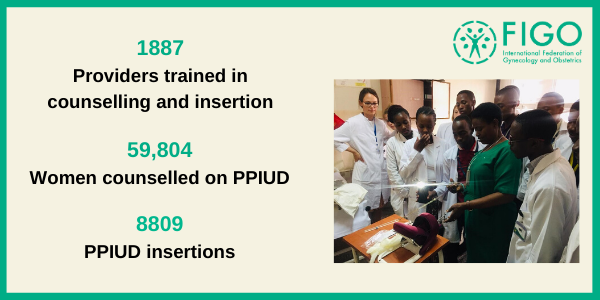PPIUD Project: Tanzania
Globally, 214 million women have an unmet need for contraception. The postpartum period provides an excellent opportunity to initiate access to family planning.
To this end, in 2013 FIGO began the ‘Institutionalisation of Immediate Postpartum IUD (PPIUD) Services Initiative’. It has trained community midwives, health workers, doctors and delivery unit staff in counselling on postpartum family planning and insertion of PPIUD immediately postpartum.
We are proud to celebrate the impressive achievements of each of the countries involved in this project.
Background
FIGO’s Postpartum IUD Initiative launched in Tanzania in 2015, with the aim of strengthening the knowledge and skills of health providers in postpartum family planning (PPFP) services. The initiative advocated for the sustained inclusion of PPIUD counselling and insertion into national services to sustain impact beyond the immediate project funding.
Between 2015 and 2020, the project has worked closely with facilities to:
• Improve effectiveness of PPFP information and counselling amongst clients attending antenatal and delivery services.
• Strengthen the capacity (knowledge and skills) of health professionals.
• Improve the quality of PPIUD service delivery by minimising complications.
• Increase utilisation of teaching hospitals for practical PPIUD training, by students in affiliated pre-service clinical schools.
• Embed data collection on PPFP and PPIUD into routine data recording mechanisms at facility, district and regional level to establish feedback loops.
• Produce an effective and reproducible PPIUD service model that can be recommended to the government for scale-up nationwide.
Project Duration: 5 years (2015-2020)
Partner Societies: The Association of Gynaecologists and Obstetricians of Tanzania (AGOTA), 2015 – 2018 The Tanzania Midwives Association (TAMA), 2018 – 2020
Key Stakeholders: National, Regional and District Governments; Medical, Nursing and Midwifery Schools.
Number of Facilities: 6 referral hospitals, each with 4-5 lower level satellite facilities.
Key Data


